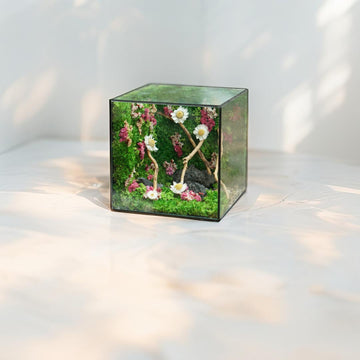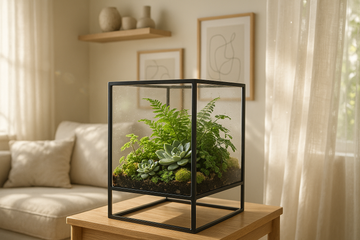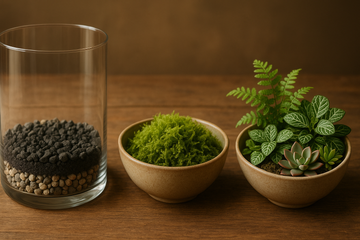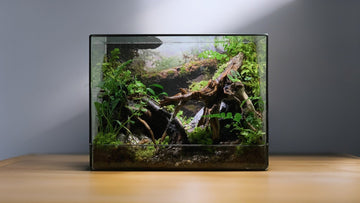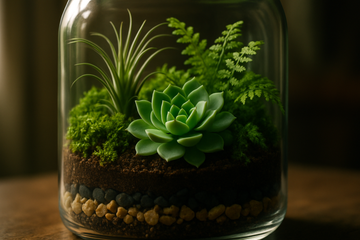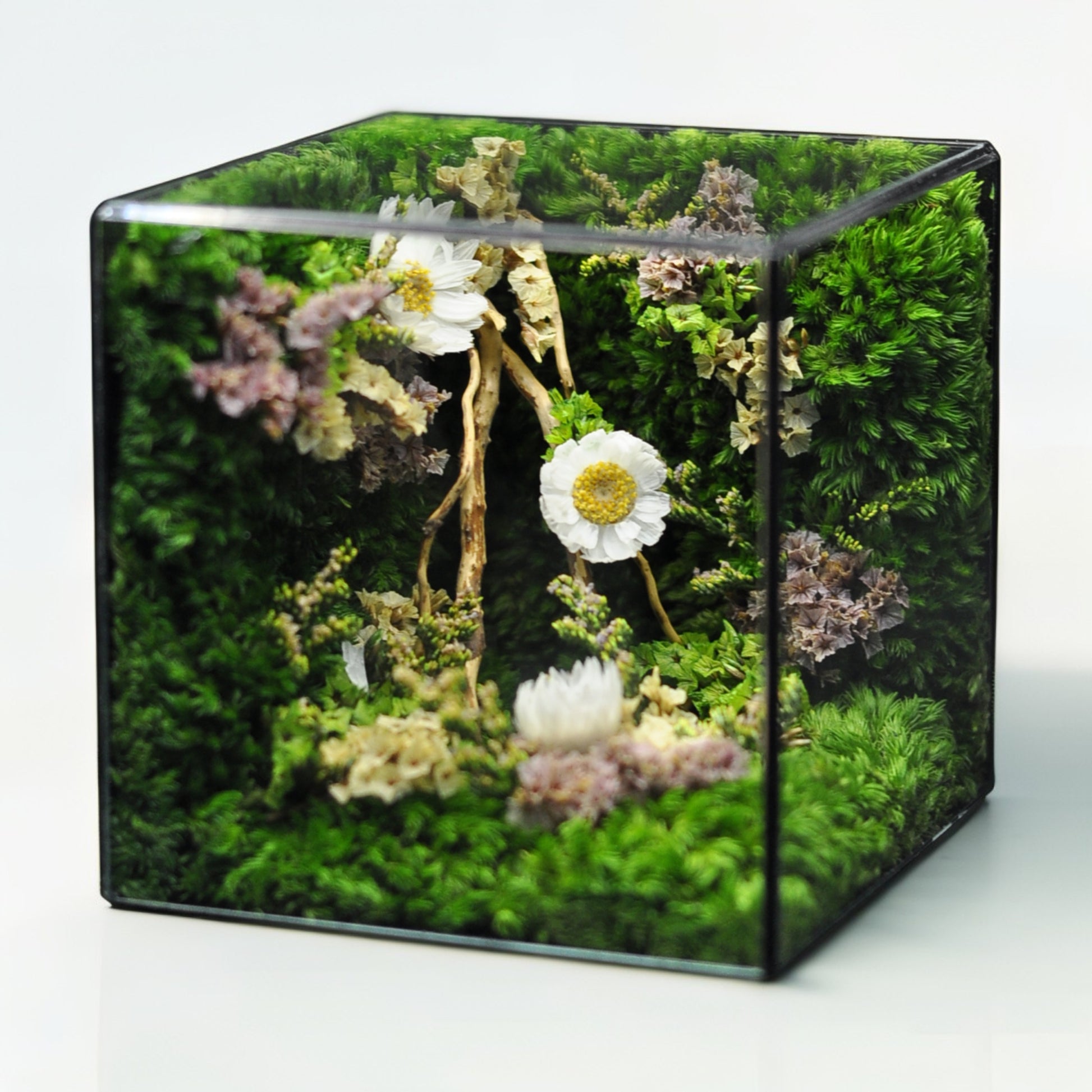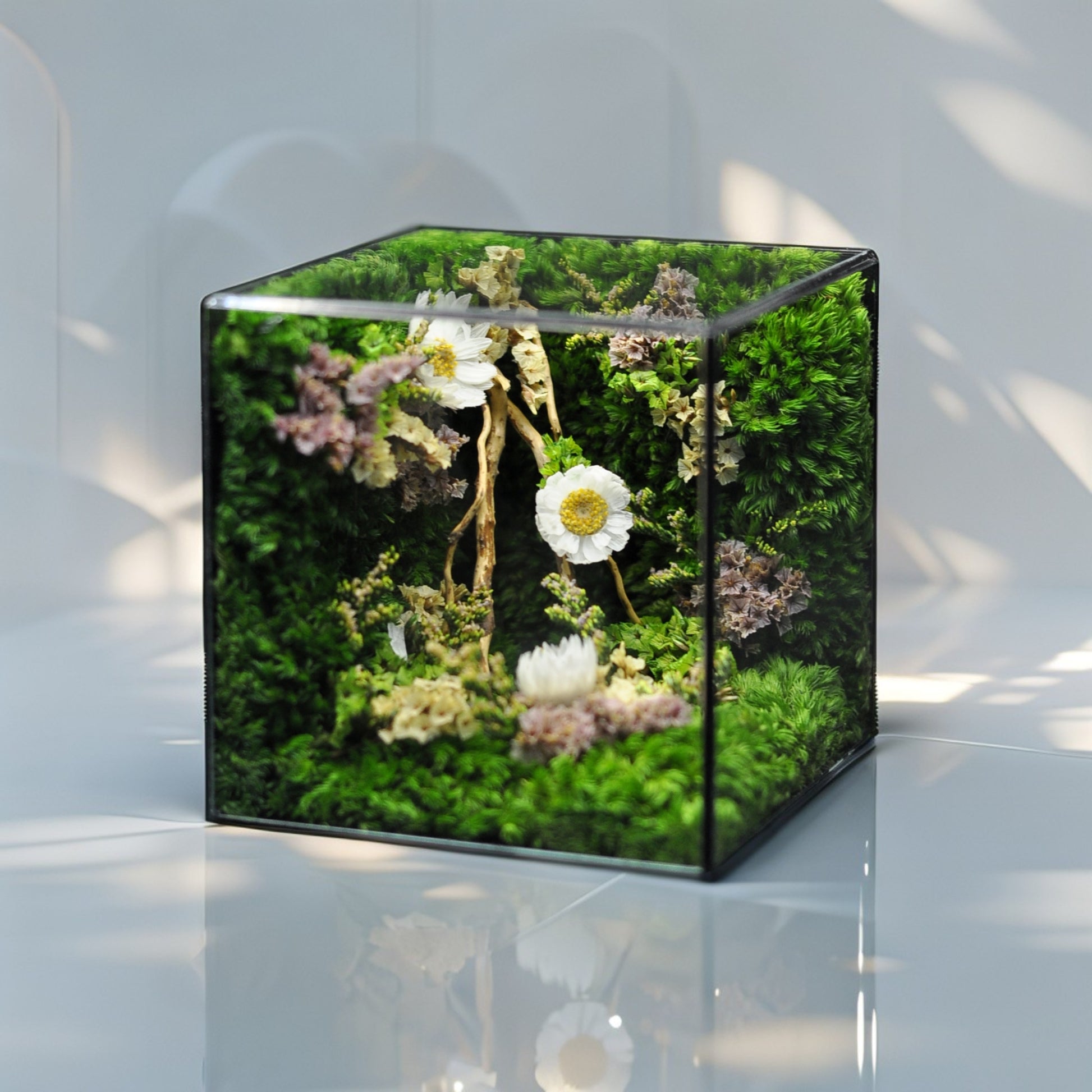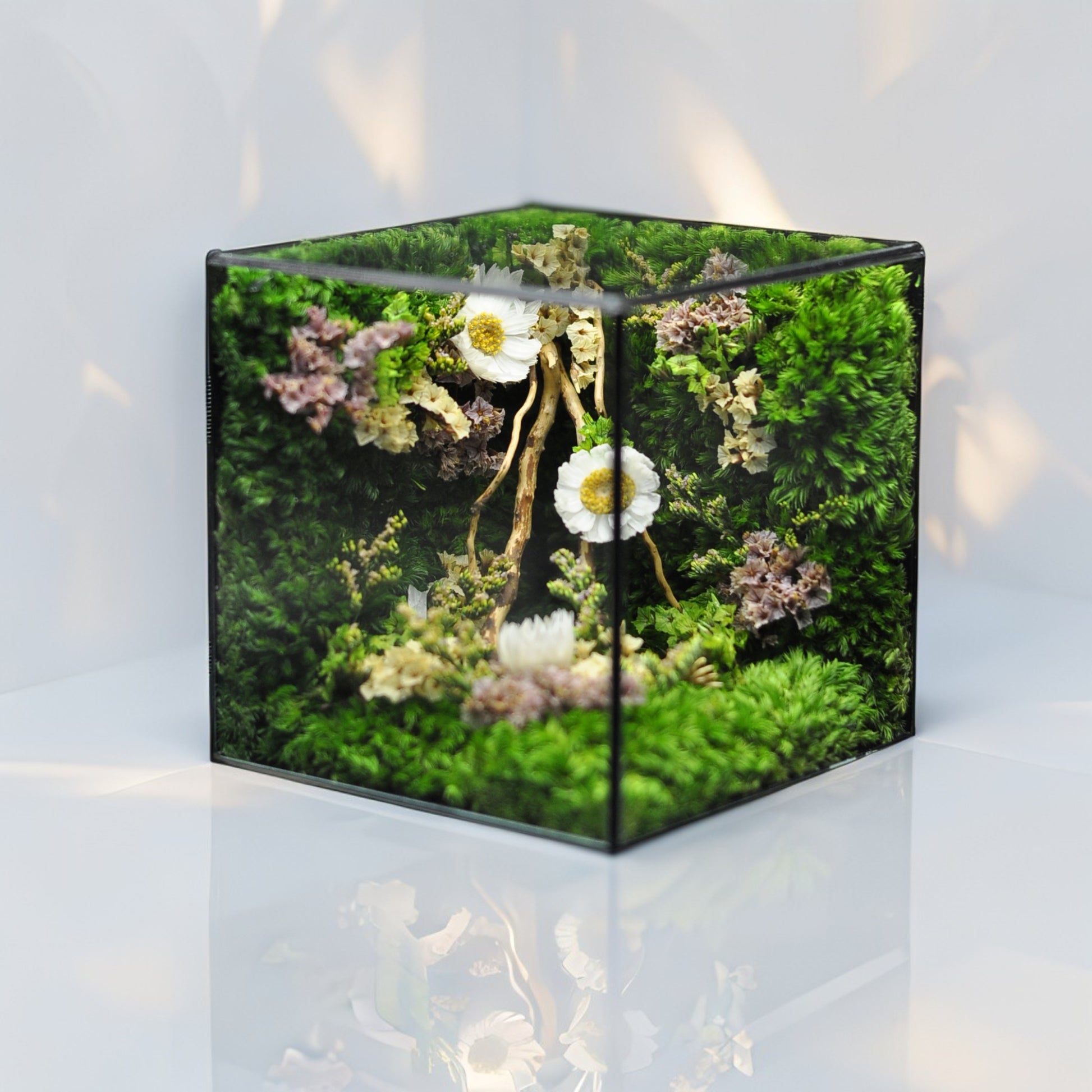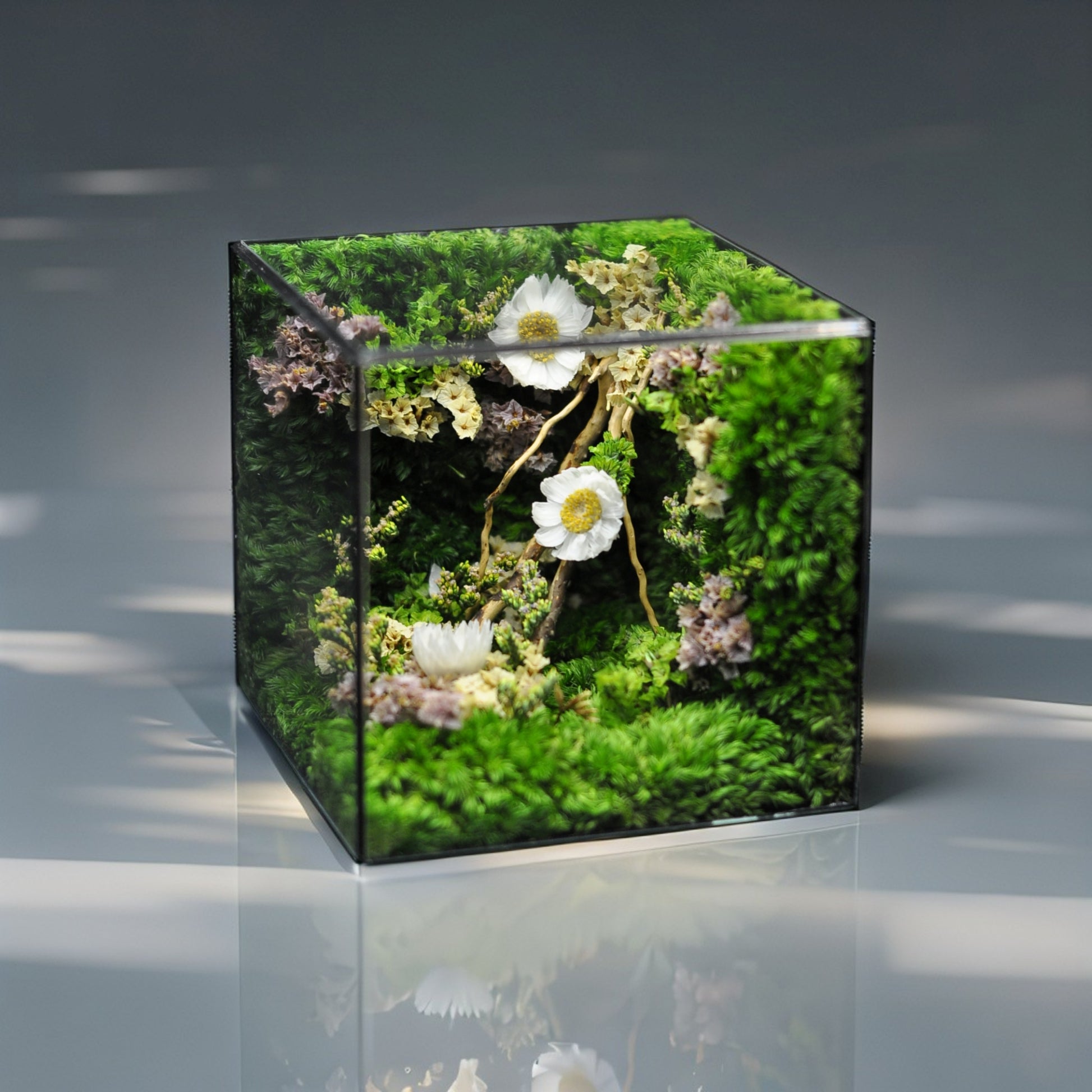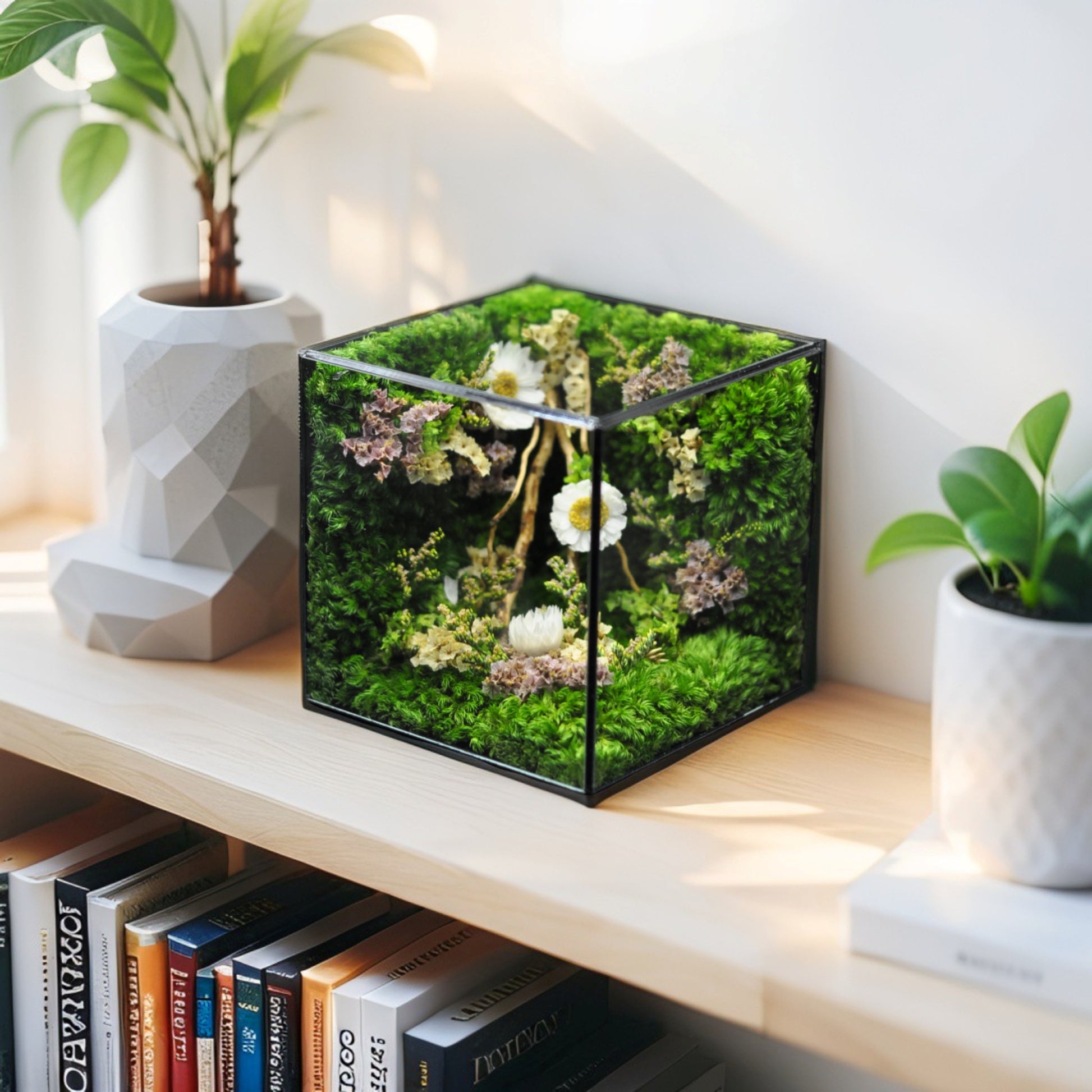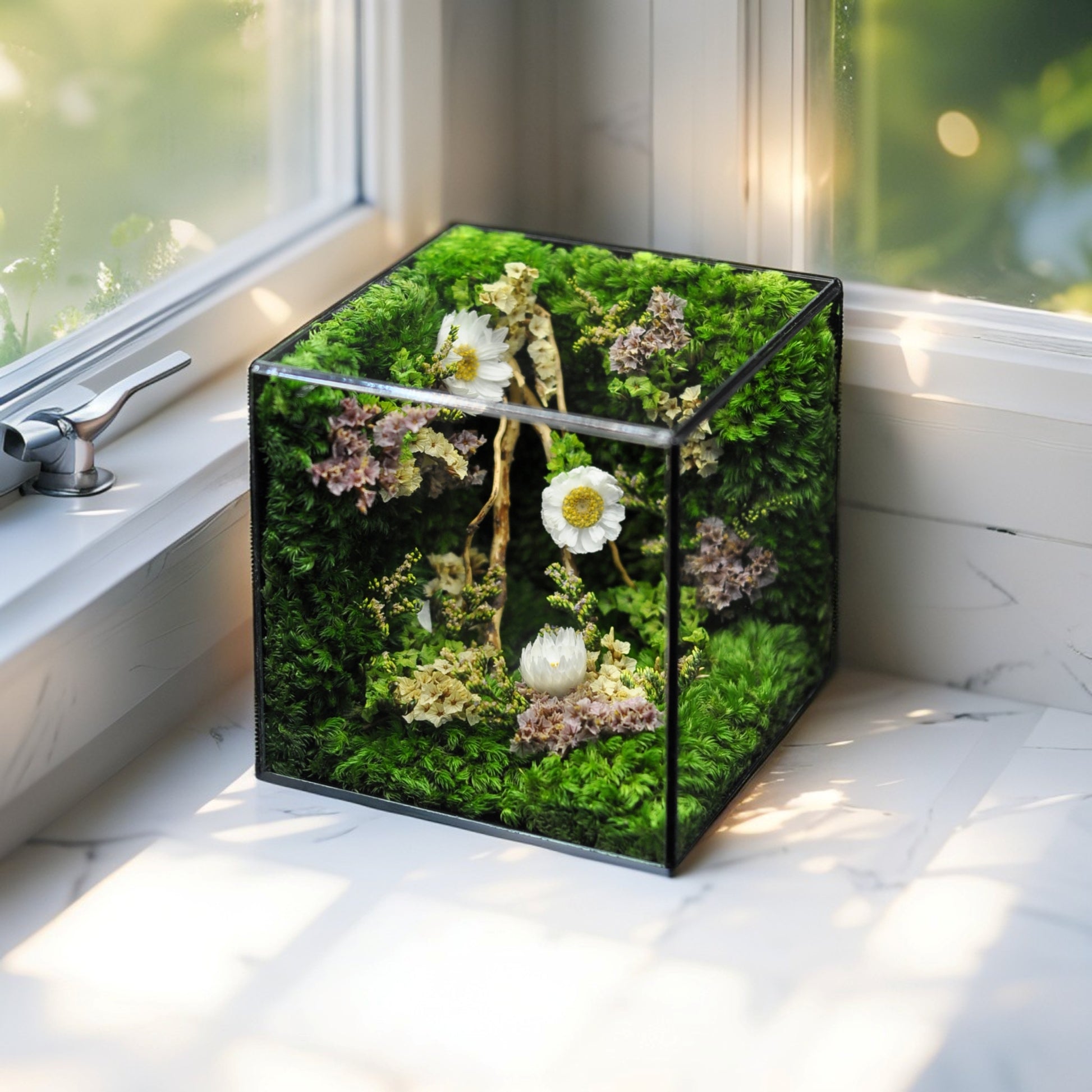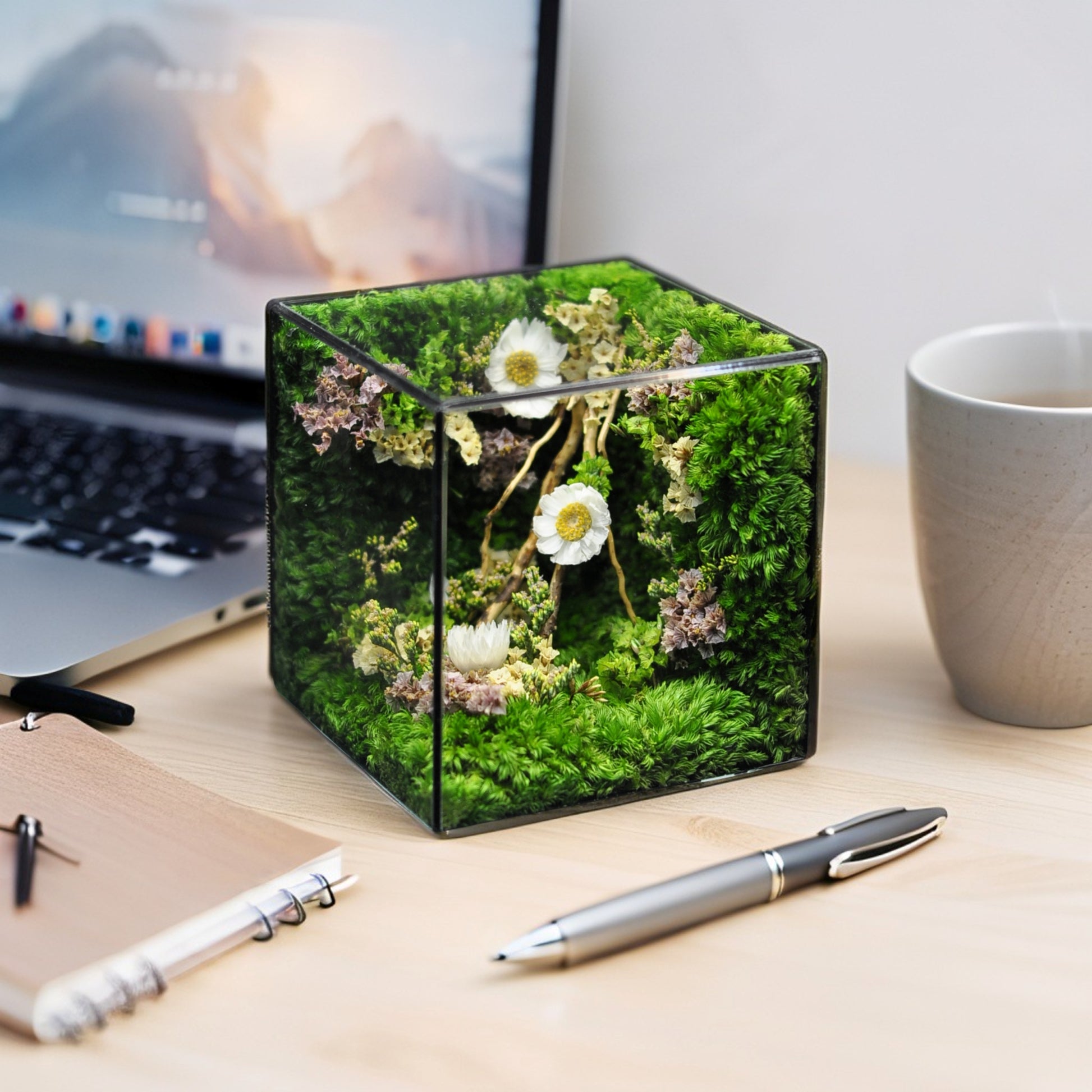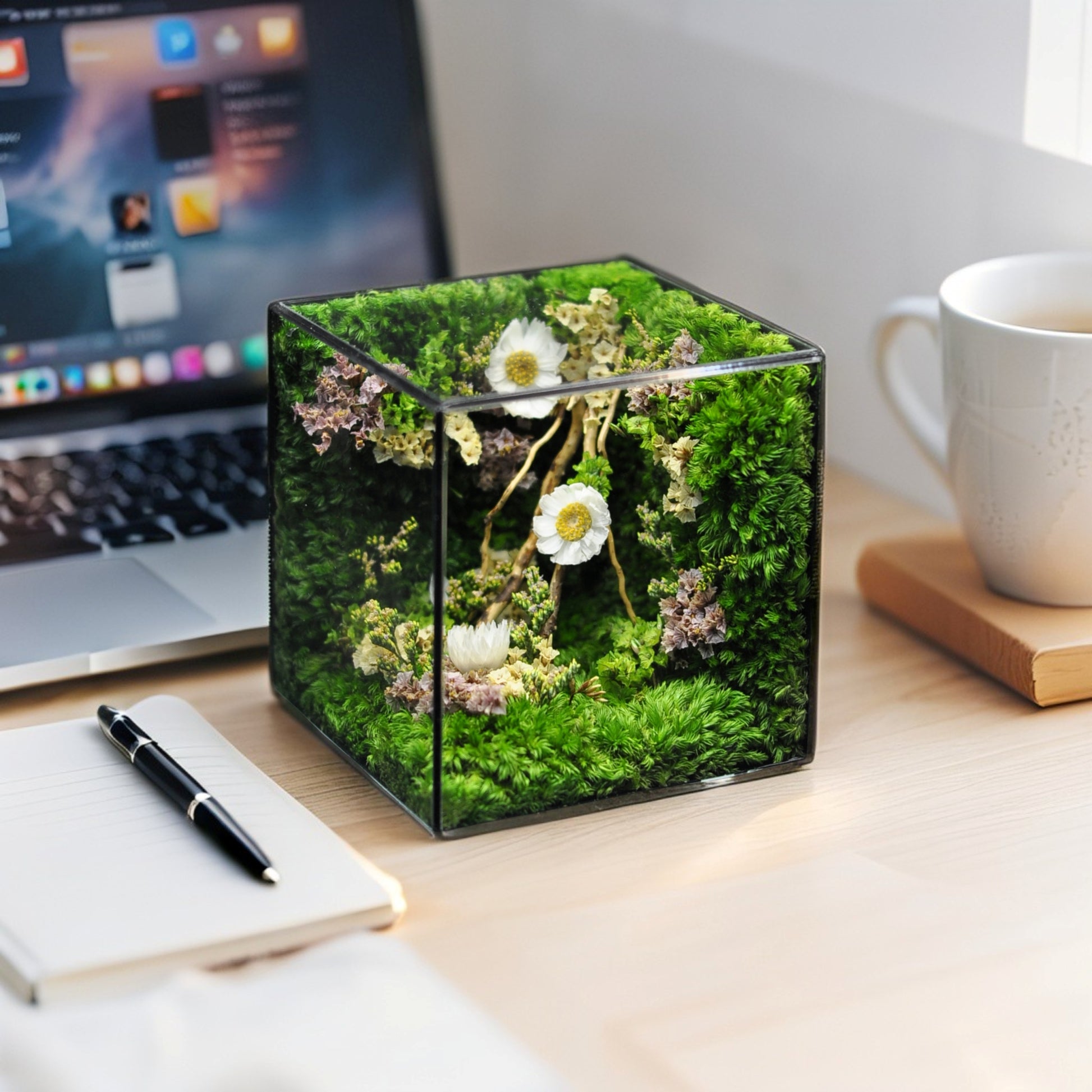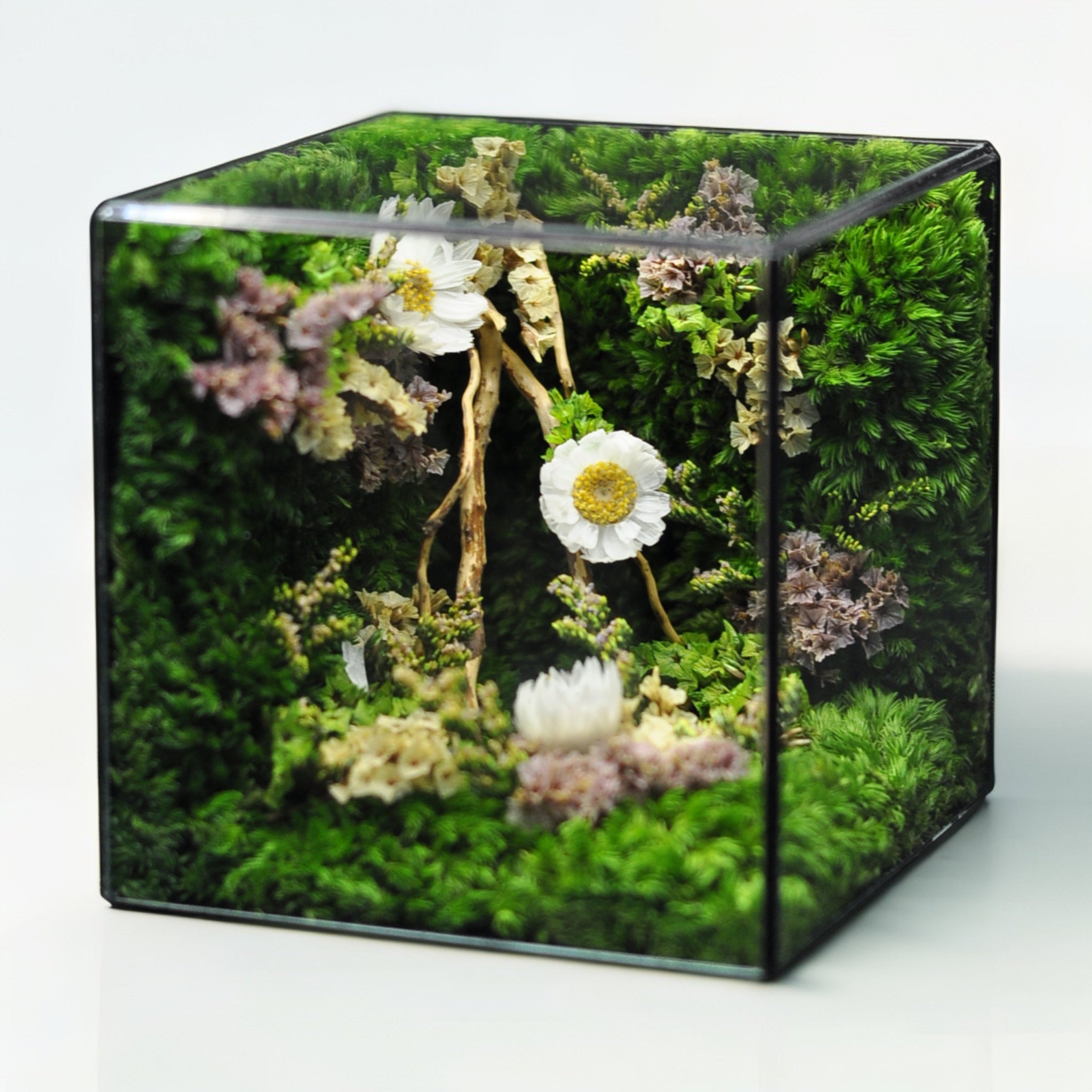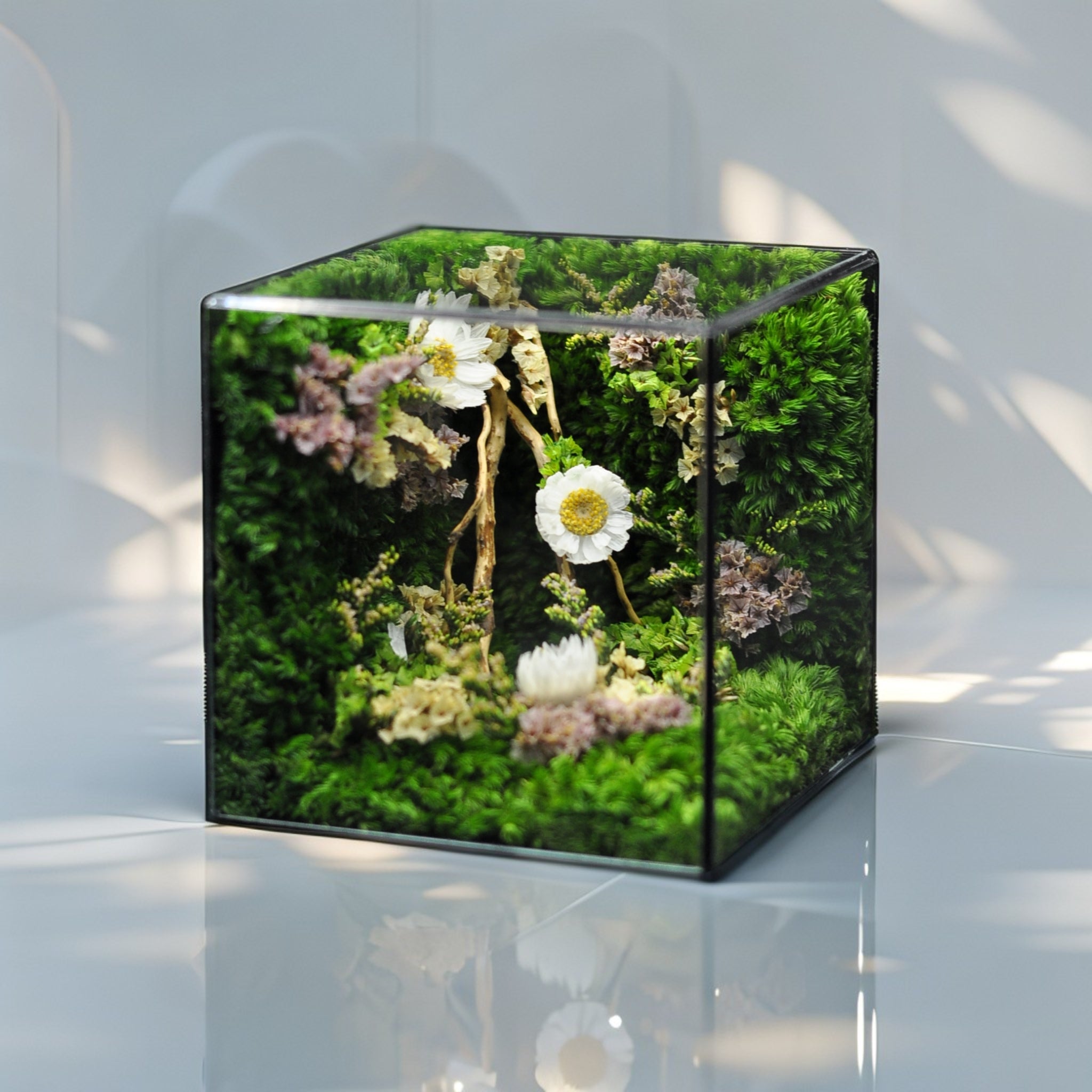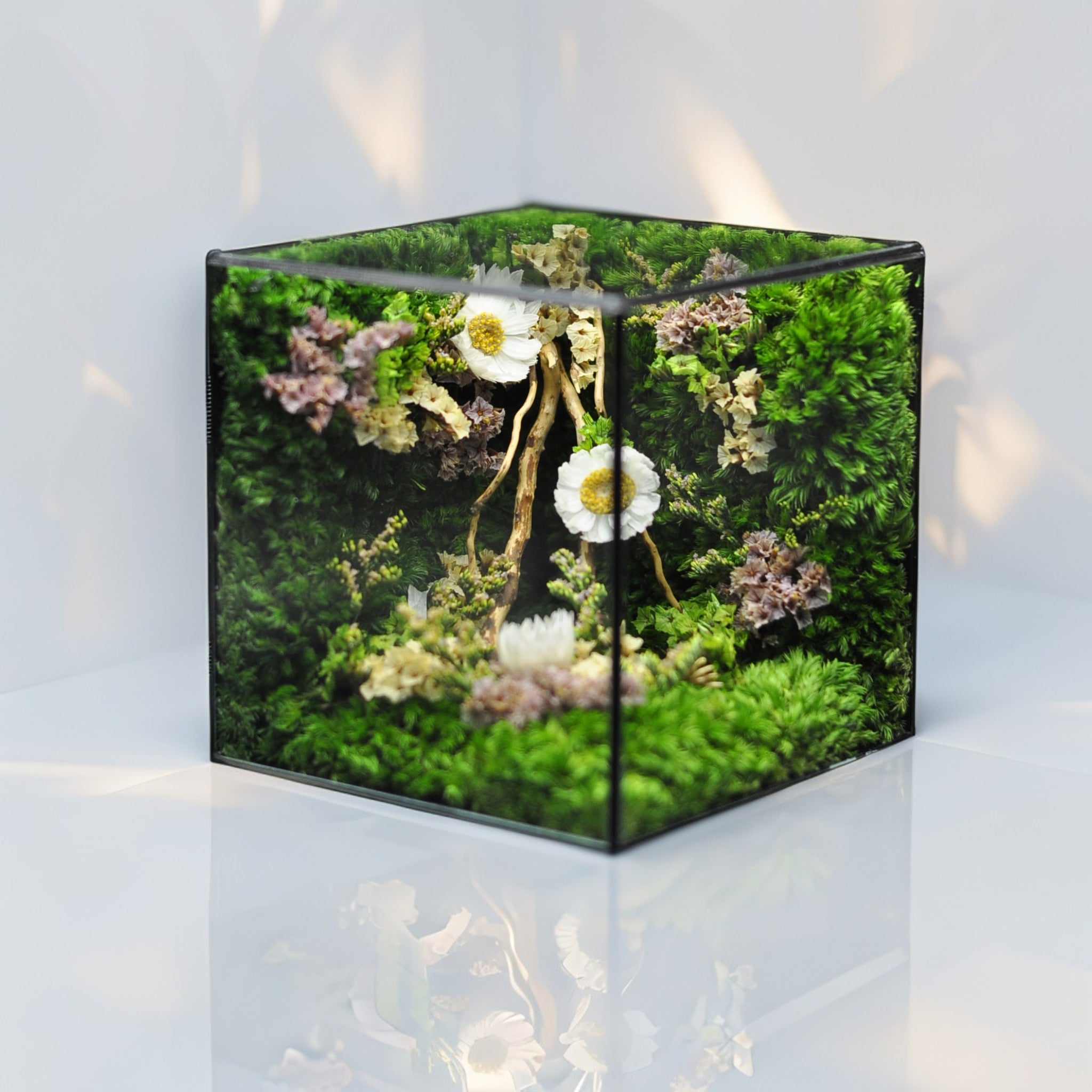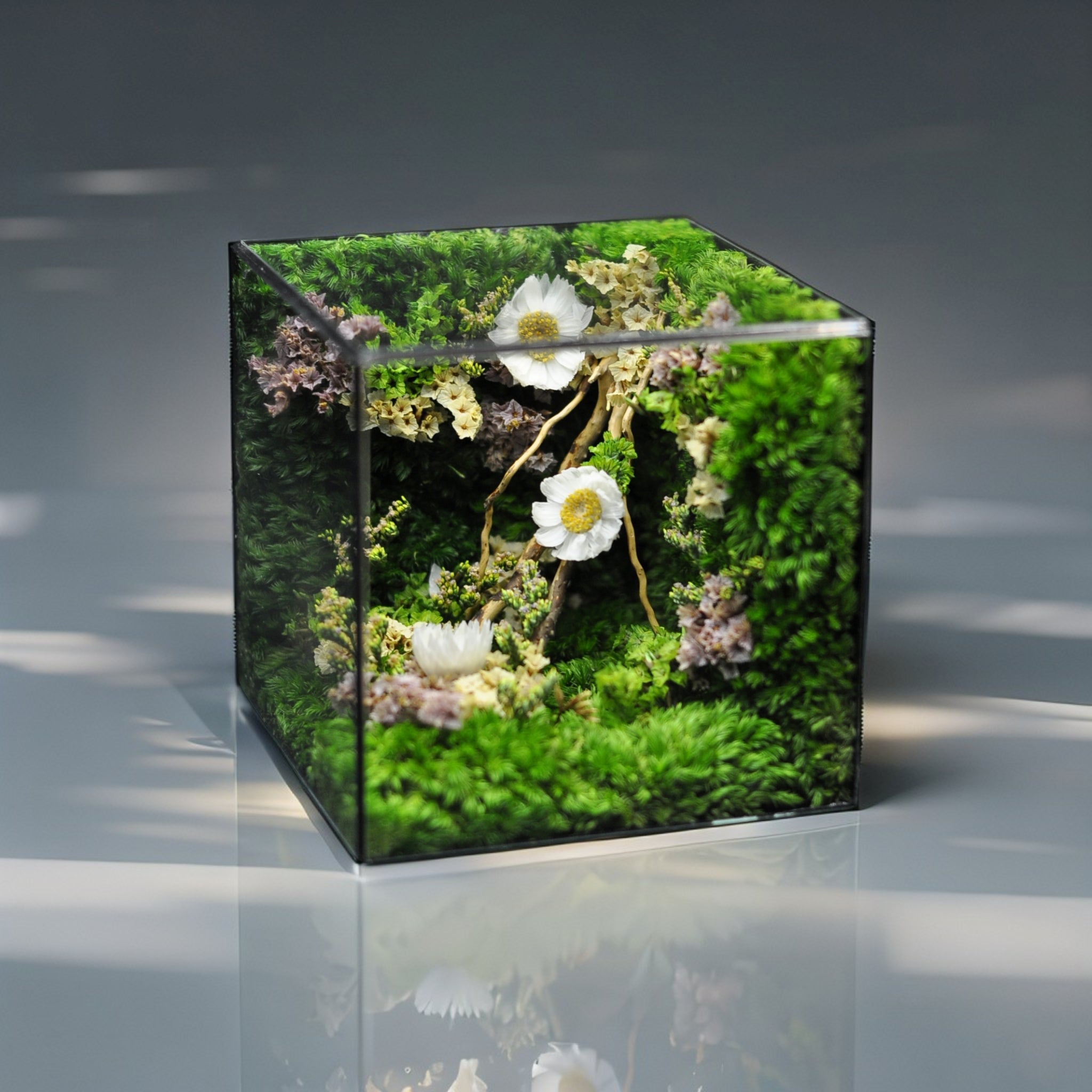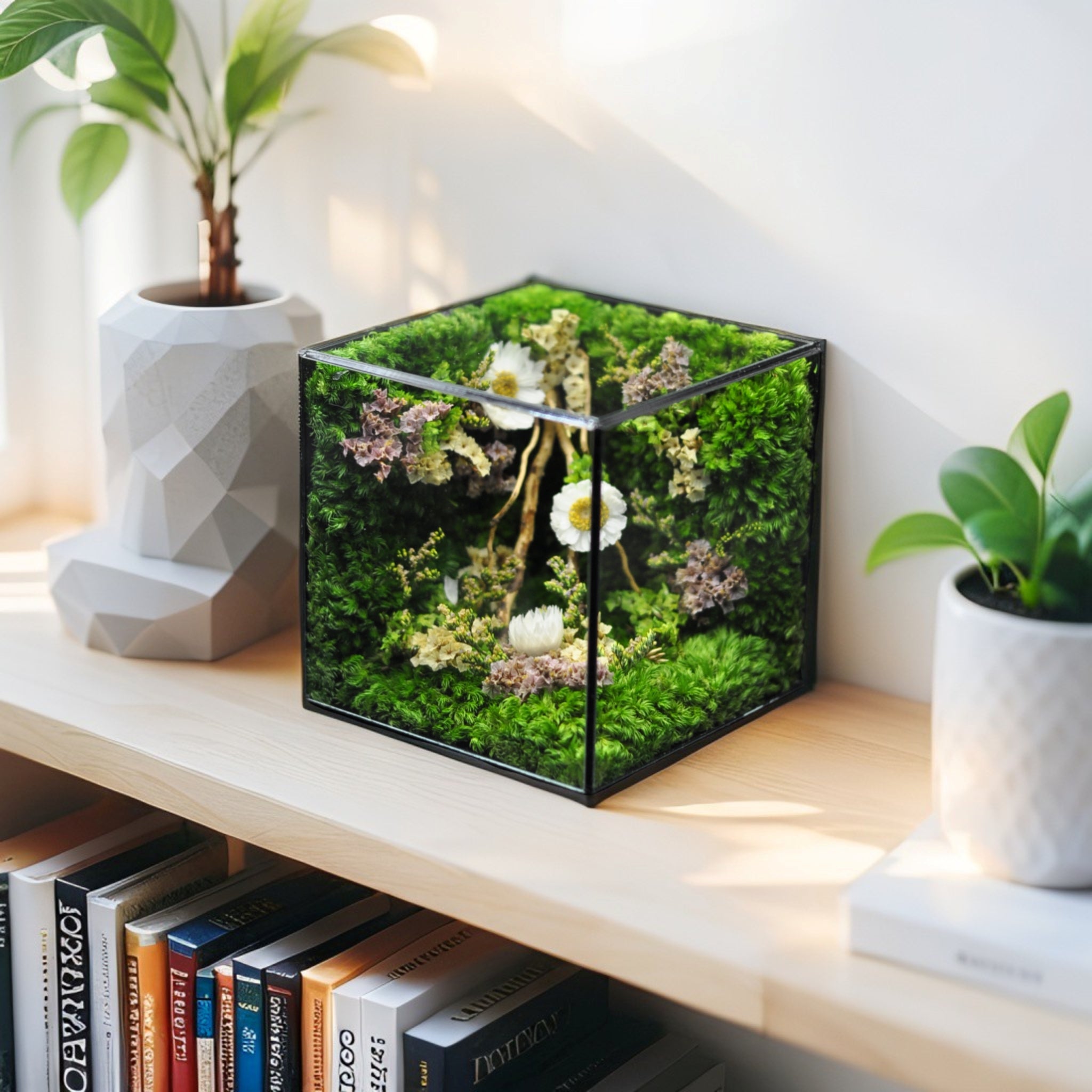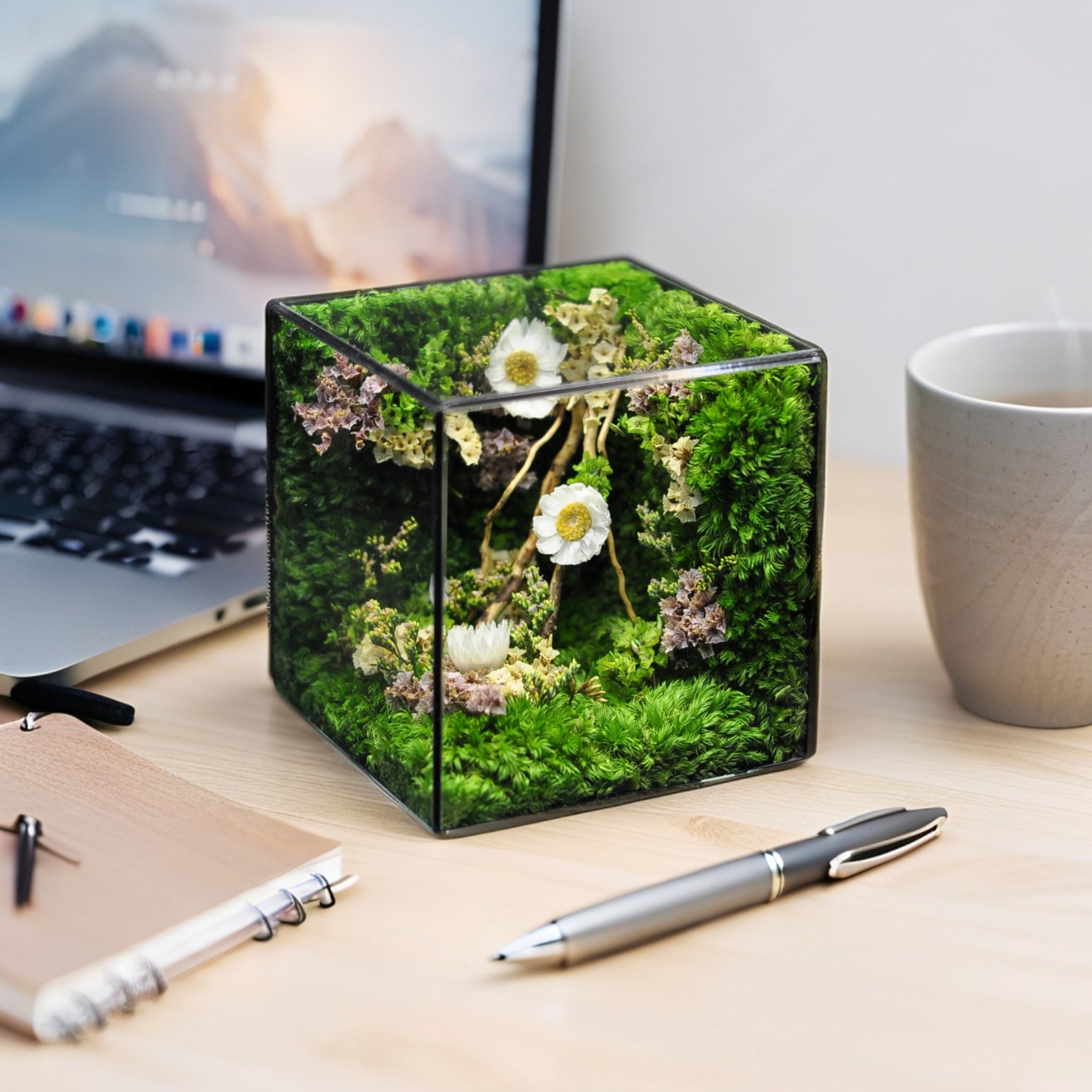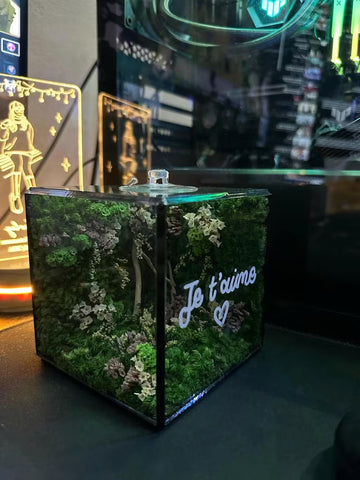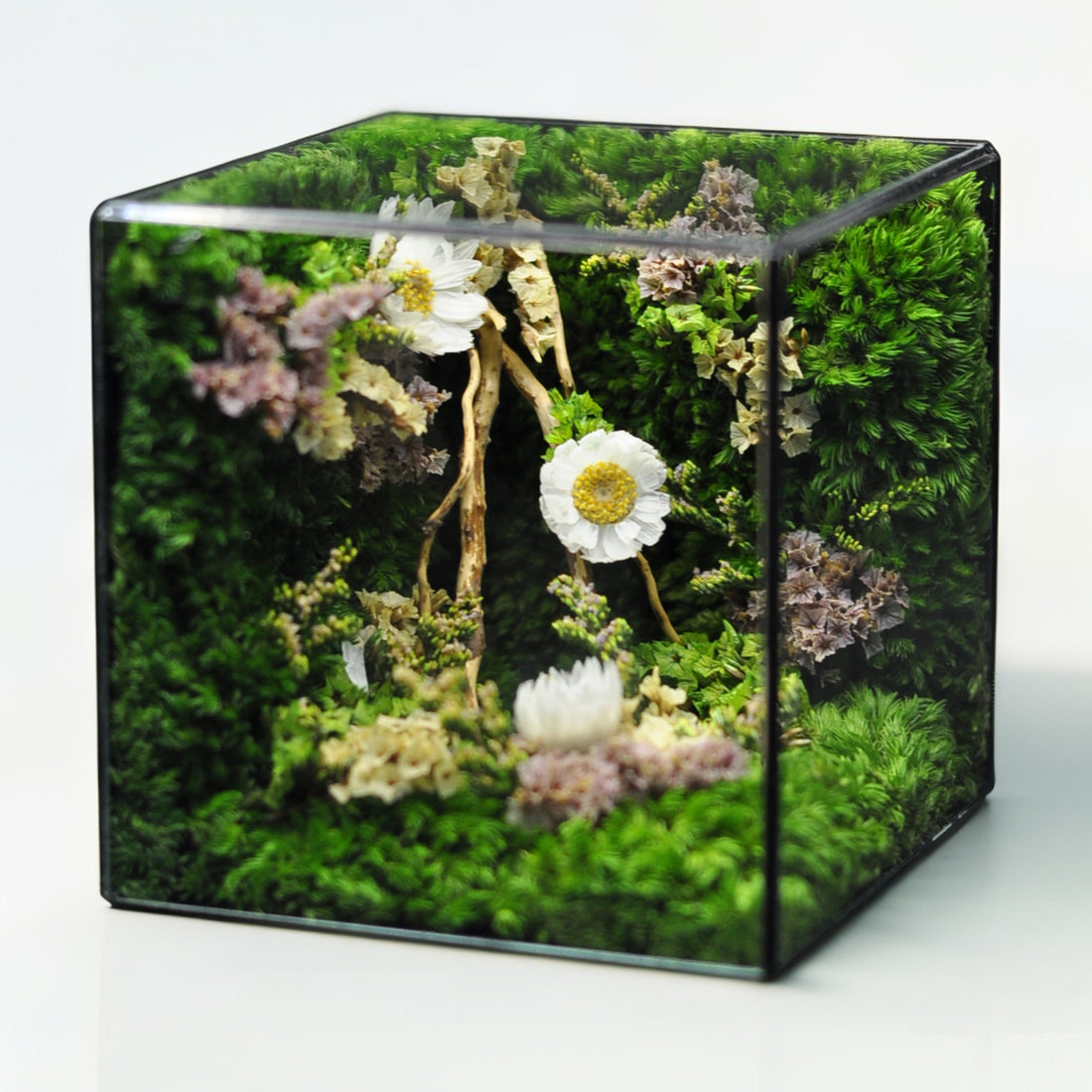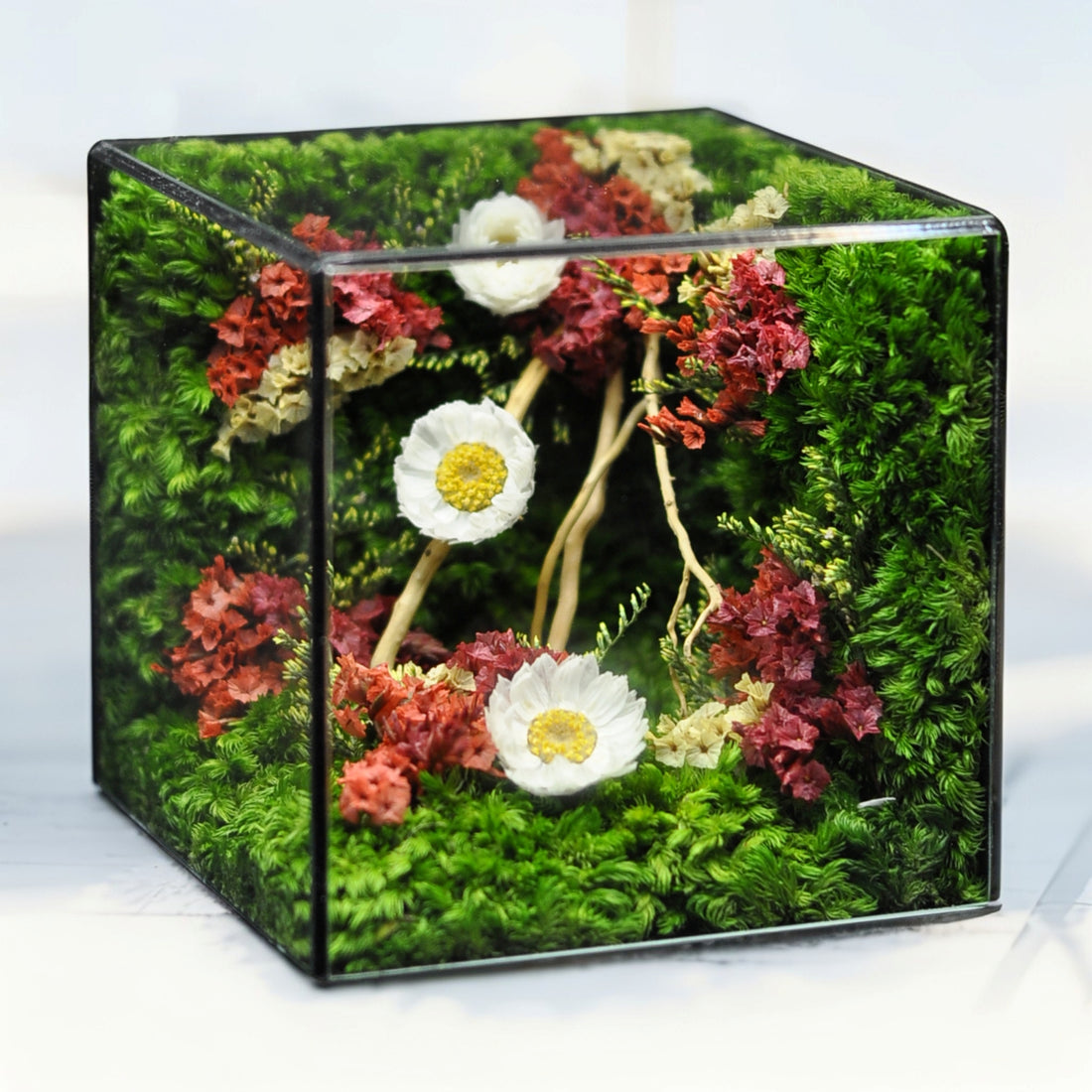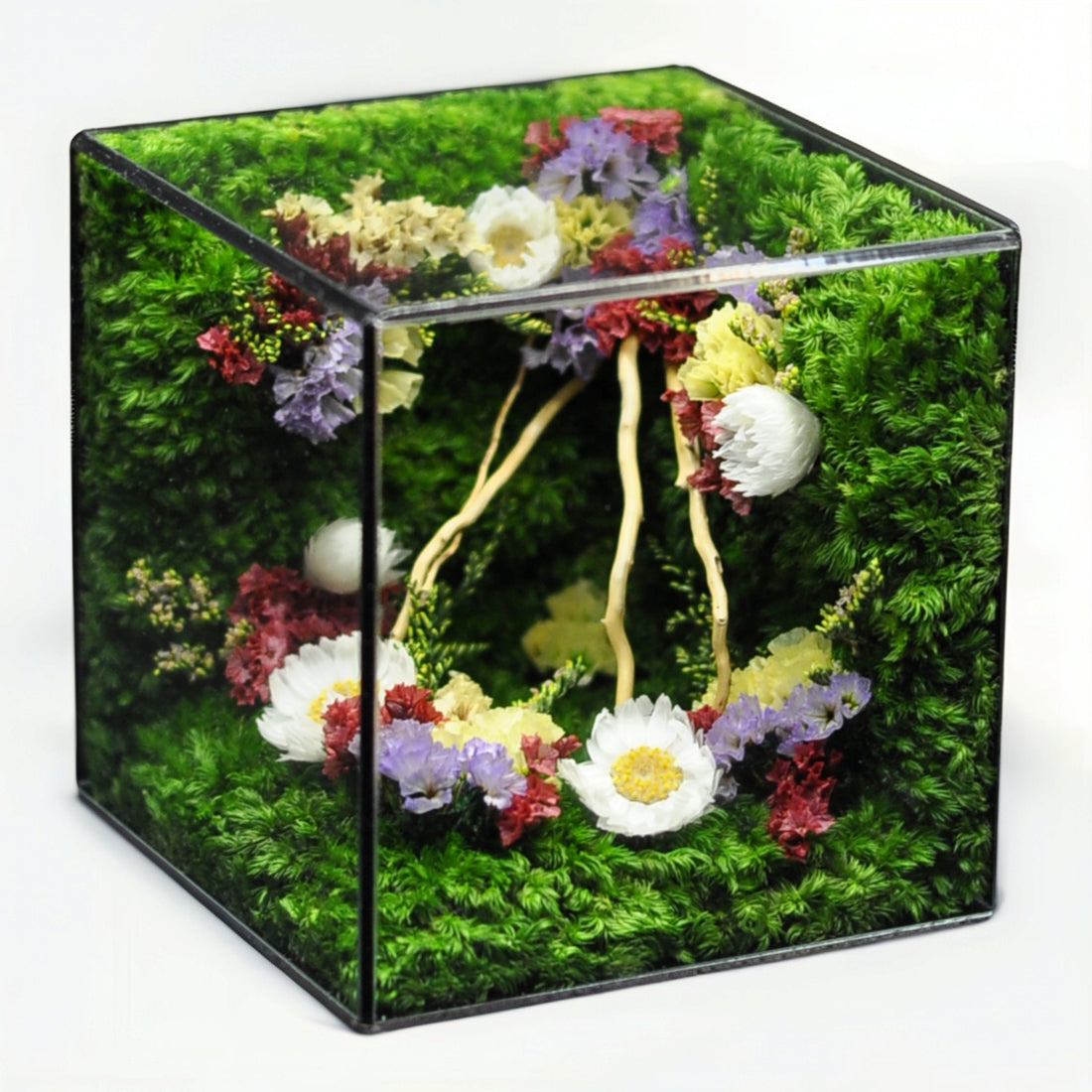Key Takeaways
Discovering the perfect terrarium for your home involves more than just a love for indoor plants—it requires understanding container types, kit components, plant needs, and maintenance routines. These takeaways distill expert buying criteria and fill the gap left by DIY-heavy guides, ensuring you choose a ready-to-purchase design that thrives and delights.
- Match Terrarium Types to Your Plants: open vessels suit succulents and cacti while closed domes foster humidity-loving species like ferns and air plants, ensuring optimal growth conditions.
- Bypass DIY Overload with Targeted Buying Advice: this guide fills the void of tutorial-focused content by offering expert-vetted terrarium designs and clear selection criteria for ready-to-purchase kits.
- Verify Complete Layering Components: premium kits include drainage pebbles, activated charcoal, nutrient-rich soil, and decorative substrate to balance moisture and support root health.
- Opt for Low-Maintenance Plant Combos: choose succulent or air plant arrangements that thrive indoors with minimal watering and upkeep, perfect for busy lifestyles.
- Prioritize Crystal-Clear, Durable Glass: select designs crafted from tempered, UV-resistant glass to ensure long-lasting clarity and scratch resistance in your indoor garden.
- Seek User-Friendly Assembly: pick best terrarium kits for beginners that come with step-by-step instructions, pre-measured materials, and essential tools for effortless setup.
- Assess Size and Display Flexibility: choose from tabletop, hanging, or wall-mounted designs to seamlessly integrate a lush, low-maintenance indoor plant décor into any room.
- Align Care Routine with Your Schedule: open terrariums need weekly watering while closed models require only occasional misting—match your terrarium maintenance to your routine.
- Choose Reputable Retailers and Brands: find where to buy glass terrariums online by selecting suppliers with expert-curated offerings, transparent reviews, and reliable customer support.
With these insights in hand, you’re ready to explore our Top 10 Terrarium Designs to Buy for Your Home, each selected for style, functionality, and ease of care.
Introduction
Embracing the lush beauty of a terrarium in your home isn't just about indulging your green thumb—it's a thoughtful fusion of art and nature that can transform your space. With their intricate ecosystems nestled within clear glass, terrariums serve as stunning indoor decor options, but choosing the right design involves more than merely picking your favorite plants.
Understanding the types of terrariums and their specific plant needs is essential, especially in a world inundated with DIY distractions. This guide offers a comprehensive selection of ready-to-purchase terrarium designs, complete with expert insights on materials, maintenance, and assembly. With our carefully vetted recommendations, you'll not only enhance your home but also cultivate a thriving indoor garden tailored to your lifestyle.
Let's delve into the top 10 terrarium designs to buy for your home, each selected for their aesthetic appeal, functionality, and ease of care, ensuring your new green oasis adds beauty without overwhelming your daily routine.
Understanding Terrarium Basics: Types & Containers
Ever wondered why some terrariums thrive with almost no upkeep while others demand precise climate control? It all comes down to selecting the right container—open or closed.
Open vs. Closed Terrariums: Benefits & Ideal Plants
Open terrariums feature an exposed top or side, promoting airflow and reducing humidity. They work well in drier rooms and suit plants that prefer well-drained soil:
- Succulents & Cacti: Echeveria and Sempervivum, with rosette shapes that add architectural interest.
- Air Plants (Tillandsia): Absorb moisture from the air and benefit from regular airflow.
- Miniature Herbs: Basil and thyme enjoy ventilation to prevent fungal issues.
Closed terrariums have sealed lids or tight-fitting openings, creating a mini greenhouse that traps moisture. They excel in humid environments and support:
- Ferns & Mosses: Maidenhair and Button fern species thrive at 50–70% humidity (typical range).
- Tropical Plants: Fittonia, Peperomia, and baby tears flourish in consistently moist, diffused light.
- Air Plants in High-Humidity Setups: Briefly airing prevents rot without sacrificing humidity.
Now that you know your options, match them to your daily routine and home environment.
Matching Terrarium Type to Your Lifestyle
Choosing between open and closed designs depends on three key factors:
- Time Commitment
- Open terrariums require weekly watering and pest checks.
- Closed terrariums need less frequent watering but benefit from humidity monitoring and occasional airing.
- Home Environment
- Dry, air-conditioned rooms favor closed designs.
- Naturally humid spaces (bathrooms, kitchens) suit open containers.
- Décor Goals
- For a minimalist, desert-like display, select an open geometric glass terrarium.
- To evoke a lush rainforest vibe, choose a closed dome or box shape.
Once you’ve decided on the style that fits your life, let’s look at choosing the right glass for clarity and durability.
Selecting Quality Glass for Indoor Plant Décor
The glass you use isn’t just a showcase—it influences plant health and viewing pleasure. When shopping for a terrarium container, consider:
- Clarity & Refraction: Borosilicate glass resists thermal shock and offers superb clarity; tempered glass is stronger and shatter-resistant but may bend light slightly differently.
- Durability: Aim for panels that are 3–5 mm thick to resist chips and cracking.
- UV Resistance: UV-filtered glass helps protect plant pigments and prevents yellowing of the container.
Pro Tip: Clean the interior monthly with a soft microfiber cloth and a touch of isopropyl alcohol to keep your view crystal clear.
Size & Display Options: Tabletop, Hanging & Wall-Mounted Designs
Once you’ve chosen your container type and glass, think about how you’ll display it:
-
Tabletop Terrariums
Compact (4–8 in. diameter), ideal for desks and shelves. Shapes include bowls, cubes, and hexagons. -
Hanging Terrariums
Teardrops or orbs suspended by macramé or metal frames—perfect for windows and small spaces. -
Wall-Mounted Terrariums
Slim, vertical planters that double as living art, with multiple pockets for layering small plants.
With the perfect container selected, let’s move on to filling it for optimal growth.
Materials & Layering Process for Optimal Growth
Core Components in Premium Terrarium Kits
A high-quality terrarium kit simplifies your build by providing:
- Glass Container: Your choice of open or closed design.
- Drainage Material: Pebbles or expanded clay to keep roots above excess water.
- Activated Charcoal: A ¼–½ in. layer that absorbs moisture, filters water, and reduces odors.
- Growing Medium: Pre-measured soil blends—cactus mix for succulents, peat-based or orchid bark for ferns.
- Plants or Plant Packets: Succulents, air plants, ferns, or tropical cuttings.
- Tools & Decor: Tweezers, a small scoop, decorative stones, and moss.
Layer-by-Layer Guide: From Drainage Pebbles to Decorative Substrate
Each layer in your terrarium serves a purpose. Follow these steps:
-
Drainage Layer (1–2 in.)
Use pebbles or expanded clay to prevent root rot by directing excess water away from the soil. -
Activated Charcoal (¼–½ in.)
Filters impurities, absorbs extra moisture, and controls odors. - Growing Medium (2–3 in.)
- For succulents: a gritty mix at pH 6.0–7.5.
- For ferns/air plants: a peat-based or bark blend at pH 5.5–6.5.
-
Plant Placement
Dig gentle holes, position your plants, and firm the soil around roots. -
Topdress & Decor
Finish with decorative pebbles, sheet moss, or small figurines to personalize your display.
Role of Activated Charcoal & Nutrient-Rich Soil
Activated charcoal isn’t just for filtering water—it helps prevent bacterial buildup and keeps humidity in check. Choosing a slow-release soil blend tailored to your plant type ensures consistent nutrition and supports healthy root growth.
Now that the groundwork is set, let’s pick the perfect plants for your terrarium.
Plant Selection for Your Terrarium
Succulent Terrariums: Crafting Low-Maintenance Plant Combos
Open terrariums are perfect for drought-tolerant succulents. Here are some ideal pairings:
- Echeveria & Sempervivum: Symmetrical rosettes for architectural interest.
- Haworthia & Aloe Vera: Variegated leaves add visual contrast.
- Sedum & Crassula: Trailing varieties that soften container edges.
Pro Tip: Plant in odd-numbered groups (3–5) and mix shapes and colors for depth and balance.
Air Plants & Ferns: Thriving in Closed Environments
Closed terrariums mimic rainforest conditions for high-humidity lovers:
- Air Plants (Tillandsia): No soil needed; mist twice a month and ensure bright, indirect light.
- Ferns (e.g., Maidenhair, Button Fern): Keep substrate consistently moist and maintain 50–70% humidity.
Designer Insight: Attach air plants to driftwood or shells and mound soil for ferns to create a realistic understory.
Can Succulents Survive in Closed Terrariums?
Most succulents struggle in sealed environments due to excess moisture. If you love succulents and a closed container, choose one with a removable lid or vent holes. Open it weekly to let humidity escape and prevent mold.
With your plant selection in hand, it’s time to assemble your kit.
How to Assemble Your Terrarium Kit
Best Terrarium Kits for Beginners: Top Picks & Tips
Ready-to-use terrarium kits remove the guesswork. Look for options that include:
- Clear, illustrated instructions or video tutorials.
- Pre-measured soil, drainage materials, and charcoal.
- Quality glass containers with secure lids.
- Plant selections matched to the kit’s design.
Pre-Assembly Checklist: Tools & Pre-Measured Materials
Before you begin, gather:
- Protective gloves and a small spray bottle of distilled water.
- Tweezers or mini tongs, and a mini scoop or spoon.
- Moisture meter (optional) for precise readings.
- All kit components laid out in order for a smooth workflow.
Step-by-Step Assembly Guide
- Clean the container with isopropyl alcohol to remove residues.
- Add 1–2 in. of drainage pebbles or expanded clay.
- Layer ¼–½ in. of activated charcoal evenly.
- Place 2–3 in. of appropriate growing medium, shaping mounds for plants.
- Position plants with tweezers and firm soil gently around roots.
- Decorate with moss, stones, or figurines.
- Water: mist closed terrariums lightly; thoroughly moisten soil in open terrariums.
- Seal closed containers or leave open designs without lids.
First-Month Care Checklist
- Week 1: Monitor condensation and adjust misting.
- Week 2: Light mist if needed; watch for dry spots.
- Week 3: Check soil moisture 1–2 in. below the surface.
- Week 4: Prune any yellow leaves and clean glass.
Common Mistake: Over-misting closed terrariums in week one can lead to excessive condensation. Observe moisture patterns and adjust accordingly.
Now that it’s assembled, let’s keep your terrarium thriving.
Terrarium Maintenance & Care Tips
Watering Strategies: Weekly vs. Occasional Misting
Watering frequency varies by design and environment—adjust based on your home’s temperature and light:
- Open Terrariums: Deep water every 7–10 days, letting soil dry between sessions.
- Closed Terrariums: Mist every 2–4 weeks, aiming for a fine film of moisture on the glass without pooling.
Light Requirements & Placement for Healthy Growth
Plants need light but can burn under direct glare:
- Bright, Indirect Light: Place near east- or north-facing windows.
- Avoid Direct Afternoon Sun: Glass can magnify UV rays and scorch leaves.
- Supplemental Grow Lights: 6,500K LED strips providing 1,000–2,500 lux help in low-light rooms.
Monitoring Soil Moisture & Humidity Levels
- Use a moisture meter every two weeks to gauge soil dampness.
- In closed terrariums, light fogging indicates 60–80% humidity (ideal range).
- In open terrariums, aim for dry soil 1–2 in. below the surface before watering.
Addressing Common Issues: Overwatering, Mold & Pests
- Overwatering: Yellow leaves signal excess moisture—remove the lid and let soil dry.
- Mold/Mildew: Wipe away white fuzz with a cotton swab; increase airflow.
- Pests: Prevent fungus gnats and mealybugs by quarantining new plants and using neem oil or predatory insects if needed.
With regular care, your terrarium will remain a healthy focal point in your space.
Top 10 Terrarium Designs to Buy for Your Home
Selection Criteria: Style, Functionality & Ease of Care
We evaluated each design based on:
- Aesthetic Appeal: From sleek modern to rustic charm.
- Plant Compatibility: Open versus closed configurations.
- Glass Quality & Clarity: Thickness, distortion, and UV protection.
- Ease of Access: Wide openings for planting and cleaning.
- Size & Versatility: Tabletop, hanging, or wall-mounted.
- Price vs. Value: Affordability paired with reliable plant health.
Detailed Reviews of the Top 10 Glass Terrarium Designs
Here are our top picks, each chosen for its design, functionality, and compatibility:
-
Mkono Teardrop Hanging Terrarium
Type: Open glass orb | Ideal Plants: Air plants, succulents | Material: 4 mm borosilicate glass | Price: ~$18 | Where to Buy: Amazon, Etsy -
Ikee Design Octagon Glass Terrarium
Type: Open geometric cube | Ideal Plants: Small succulents, cacti | Material: Tempered glass panels | Price: ~$25 | Where to Buy: Urban Outfitters, The Sill -
Qiutian Geometric Closed Terrarium
Type: Closed pentagon | Ideal Plants: Moss, ferns | Material: UV-resistant glass | Price: ~$40 | Where to Buy: QiutianDirect.com -
Feimi Large Rectangular Terrarium
Type: Closed box with hinged lid | Ideal Plants: Tropical bromeliads, ferns | Material: Thick, clear glass | Price: ~$60 | Where to Buy: Amazon (Prime) -
Anpro Glass Container with Wooden Stand
Type: Open cylinder | Ideal Plants: Succulents, fairy gardens | Material: Lead-free glass | Price: ~$35 | Where to Buy: Home Depot -
Rioming Hanging Geometric Trio
Type: Open tetrahedron (3 pack) | Ideal Plants: Air plants, trailing succulents | Material: Brass-framed glass | Price: ~$28 | Where to Buy: Etsy -
YRL Modern Hexagonal Terrarium
Type: Closed hexagon with door | Ideal Plants: Moss, small ferns | Material: Frosted glass accents | Price: ~$50 | Where to Buy: The Sill -
Homtime Mini Desktop Succulent Terrarium
Type: Open globe | Ideal Plants: Tiny succulents, cacti | Material: Lightweight glass | Price: ~$15 | Where to Buy: Amazon -
T4U Wall-Mounted Glass Planter
Type: Open wall pocket | Ideal Plants: Air plants, moss | Material: Plastic-reinforced glass | Price: ~$22 | Where to Buy: Amazon -
TORCHSTAR Modern Glass Globe
Type: Closed sphere with top port | Ideal Plants: Small ferns, Fittonia | Material: Thickened borosilicate | Price: ~$45 | Where to Buy: TORCHSTAR.com
Pricing & Where to Buy Glass Terrariums Online
Whether you’re on a budget or looking for a statement piece:
- Budget ($15–$30): Small open globes and desktop kits.
- Mid-Range ($30–$60): Geometric open/closed designs with durable glass.
- Premium ($60+): Large, specialty closed terrariums with stands.
Top retailers include Amazon (wide selection, fast shipping), Etsy (artisanal designs), and plant specialists like The Sill and Bloomscape.
Trusted Retailers & Brands
Specialist Online Shops & Curated Marketplaces
- The Sill: Plant-plus-planter bundles, 30-day plant guarantee.
- Bloomscape: Direct-to-door greenhouses, one-year plant warranty.
- Terrain: Premium home & garden, artisan glass terrariums.
- Urban Jungle: Boutique kits with designer stands and accessories.
What to Look for When Buying a Terrarium Kit
- Transparent Plant List: Know the exact species included.
- Clear Assembly Instructions: Videos or detailed manuals.
- Quality Assurance: Glass thickness, leak tests, material sourcing.
- Customer Reviews: Aim for 4+ star ratings with photos and detailed feedback.
Warranty, Customer Support & Transparent Reviews
Choose brands that stand behind their products:
- Warranty Coverage: Glass breakage and plant health guarantees (30–90 days).
- Customer Support: Responsive live chat or email troubleshooting.
- Independent Reviews: Check Trustpilot and Google Reviews for unbiased feedback.
Expert Insights & Real-World Case Study
Expert Buying Criteria & Designer Tips
Horticultural designer Elise Navarro of GreenScape Studio recommends:
- “Choose containers with wide openings—planting and maintenance become effortless.”
- “Match your terrarium’s geometry to room lines: hexagons suit modern décor, rounded shapes soften minimalistic spaces.”
- “Opt for UV-filtered glass if your terrarium sits in bright light to prevent plant fatigue.”
Designer Insight: Aim for 1,000–1,500 lux of indirect light for succulents and 500–1,000 lux for ferns, measured near the container perimeter.
Case Study: Transforming a Living Room with Ikee Design Octagon Glass Terrarium
Client Profile
A 500 ft² urban apartment with limited natural light and busy professionals who wanted a low-maintenance focal point.
Implementation
- Placed the open octagon terrarium on a coffee table 3 ft from an east-facing window (~800 lux).
- Created a succulents-and-moss arrangement with a striking color palette.
- Added a 6,500K LED strip at 1,200 lux for supplemental lighting.
Aesthetic Outcome
The terrarium became a conversation piece—“a living sculpture,” as guests described it—while requiring just one weekly watering.
Data & Evidence: Growth Progress & Maintenance Success
Over a three-month trial, the client noted:
- Noticeable leaf growth and richer plant colors without any root rot or mold.
- A 20% reduction in watering frequency, thanks to optimized drainage and lighting.
- Zero pest outbreaks after quarantining new additions.
This real-world example highlights how the right kit and setup deliver both beauty and ease of care.
Conclusion
Understanding the nuances of terrarium design—open versus closed—allows you to create a thriving green space that aligns with your lifestyle and home environment. Whether you prefer the drought-resilient beauty of succulents in an open terrarium or the lush greenery of ferns in a closed environment, the right plant selection and container are crucial for success.
As we've seen, careful consideration of moisture needs, light requirements, and container materials can dramatically influence your terrarium's performance and aesthetic appeal. Furthermore, choosing high-quality kits and reliable brands enhances your success in this green hobby. By adhering to proven care guidelines, you ensure that your terrarium remains a vibrant focal point in your home for years to come.
In a world keen on sustainable living and natural beauty, why not transform your space with a personalized terrarium that reflects your style and commitment to nurturing life? Engage with the plant world—each terrarium built is a step toward a healthier, greener environment both indoors and beyond.
Frequently Asked Questions (FAQ)
Q: What is the difference between open and closed terrariums?
A: Open terrariums have exposed tops or sides for airflow and low humidity, making them ideal for succulents and air plants. Closed terrariums trap moisture in sealed lids, maintaining high humidity for ferns, mosses, and tropical plants.
Q: How often should I water my terrarium?
A: Open terrariums need deep watering every 7–10 days, letting the soil dry between sessions. Closed terrariums require light misting every 2–4 weeks to maintain moisture without pooling.
Q: Which plants are best for a low-maintenance terrarium?
A: For open terrariums, succulents like Echeveria and Haworthia and air plants thrive. In closed terrariums, choose ferns such as maidenhair and button fern, mosses, and small tropicals like Fittonia.
Q: Can succulents survive in a closed terrarium?
A: Most succulents struggle in sealed environments due to excess moisture. To keep them in a closed container, use one with a removable lid or vent holes and open it weekly to let humidity escape and prevent mold.
Q: What should I look for when buying a terrarium kit?
A: Look for quality glass containers (3–5 mm thick or borosilicate/tempered), airtight seals for closed designs, pre-measured plant-specific growing media, drainage materials, activated charcoal, clear instructions, and reliable customer support with transparent reviews.
Q: What materials are typically included in a premium terrarium kit?
A: Premium kits include a glass container, drainage pebbles or expanded clay, activated charcoal, pre-measured soil blends, plant packets or specimens, and tools and décor like tweezers, scoops, decorative stones, and moss.
Q: How do I layer a terrarium for optimal plant growth?
A: Start with 1–2 in. of drainage pebbles or clay, add ¼–½ in. of activated charcoal, then 2–3 in. of the appropriate growing medium. Position plants gently, firm soil around roots, and finish with decorative topdressing such as pebbles, sheet moss, or figurines.

